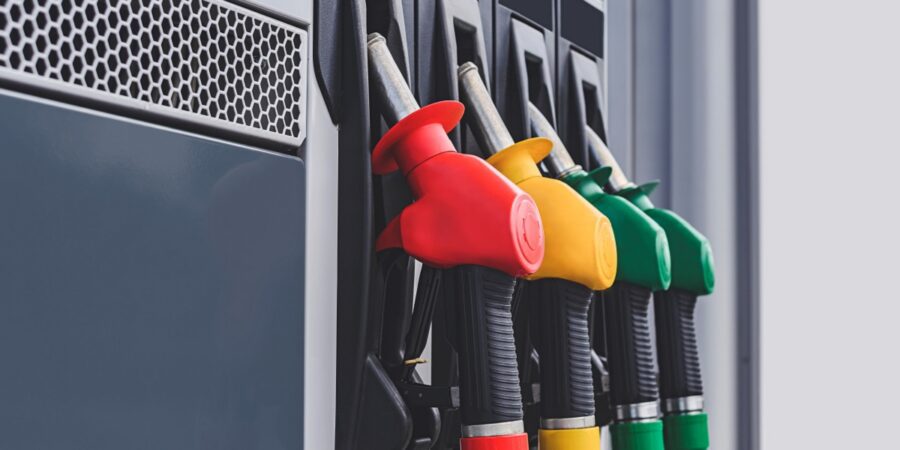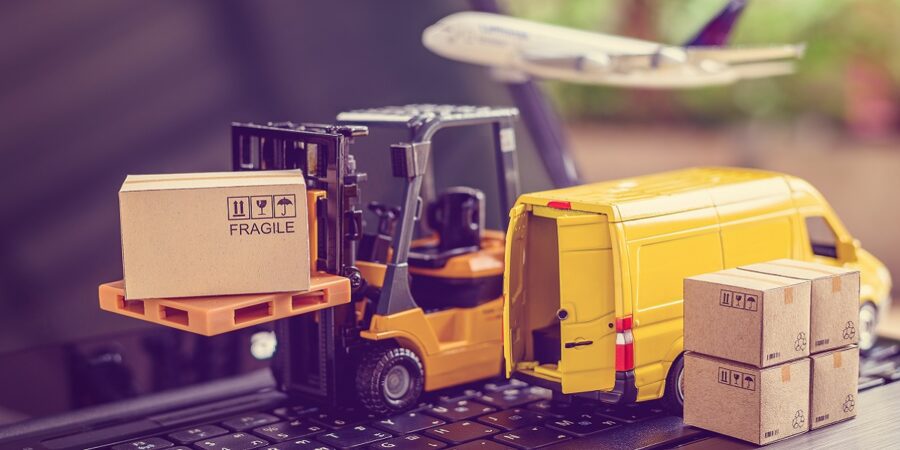
Retail
Leveraging Brick and Mortar Stores for Fulfillment
Written by: Parcel Pending
5 Min Read
Published: April 8, 2021
Updated: April 3, 2023
The pandemic upended the supply chain for many retailers. Now, micro fulfillment centers are emerging to leverage brick and mortar stores for faster, safer, cheaper, and more flexible fulfillment options.
Micro Fulfillment Defined
Whereas normal fulfillment/distribution centers are as large as 300,00 square feet located in rural environments, micro fulfillment centers are typically 3,000 to 10,000 square feet and located closer to the customer, cutting down on crucial last-mile delivery costs. These centers consist of two parts: a physical structure and a software management system that processes online orders. A recent analysis concluded that micro fulfillment could reduce order-related costs by as much as 75%1.
The growth of online sales will continue to surge. For grocery retailers, this year is a big one – with grocery sales expected to surpass $100 billion in 2021; for any retailer, it’s important to note that all online sales will hit an estimated $843 billion in the same period2. As a result, retailers are scrambling to embrace flexible fulfillment options. Target, for example, is using its stores as warehouse hubs fulfilling approximately 95% of online orders3. It also just reported booming sales demonstrating that its model is working; sales rose almost 21% in the quarter ending January 30, 2021.
Technology as a Competitive Advantage
At an underground parking ground in Tel Aviv, Israel, technology firm Fabric is demonstrating the efficiency of its rack robots that pick grocery orders for manual packing stations. By implementing an automated micro fulfillment center strategy, Fabric can increase efficiency by picking items, so employees can focus on packing a specific online order. With just 12 employees and 15,000 square feet, robots freely roam this fulfillment center, which typically fills 300 orders per day.
Walmart is now partnering with Fabric to leapfrog competitors with this technology. While grocery stories are typically limited to picking 100 orders per day, these robots can boost that capacity to 1,000 orders per day4! John Furner, Walmart U.S. President and CEO, in Walmart’s earnings call Feb. 18, said the retailer expects to have over 100 local fulfillment centers in operation “within the next couple of years.”
Turning On The Lights In Dark Stores
A new fulfillment option has also arrived in the form of “dark stores” – no customers allowed. Amazon is negotiating with Simons Property Group to take over the retail spaces formerly occupied by Sears and J.C. Penney, both of which have filed for bankruptcy5. Two of Macy’s stores were also transformed into what is known as a dark store – a fulfillment center where they process online orders and returns rather than a place for customers to browse and shop.
Turning these spaces into fulfillment and warehouse automation centers allow behemoth retailers and e-tailers to place distribution centers in the middle of cities (and closer to customers) that typically prohibit new construction.
For more information on this and other industry terms like click & collect or BOPIS, check out the detailed overviews linked here.
Lightning-Fast Delivery Within Hours
Customers’ demand for delivery options is at an all-time high. According to a recent survey SmartBrief conducted with IDC, consumers are basing their decisions on where to shop based on services like buy online, pick up in-store (BOPIS); curbside/drive-up pickup; and omnichannel return options6. By employing micro fulfillment sites, retailers are slashing delivery times for online orders allowing products to reach customers in just a few hours versus a day. In short, flexible fulfillment options matter.
How Lockers Support Micro Fulfillment
Curbside pick-up, BOPIS (Buy Online, Pick Up In-Store), and BOPIL (Buy Online, Pick-up in Locker), all play major roles in the race for customer satisfaction and loyalty. However, when comparing these three different fulfillment options, it’s clear why BOPIL overwhelmingly wins.
Store employees must take the time to deliver orders directly to the customer with curbside collection. With BOPIS, it’s the customer who must take the time to park, walk into the store, and potentially wait for a store employee to deliver the order. With BOPIL, however, customers retrieve their orders at their convenience typically without any wait times.
Customers who wait under 2 minutes for their order pick-up are four times more likely to repeat purchase from the same retailer.
Moreover, retailers that employ BOPIL saved an average of 45 hours per month versus managing BOPIS orders7. Most importantly, with BOPIL, a whopping 61% of customers make an incremental purchase just by virtue of entering the store!
BORIS (Buy Online, Return In-Store) Made Easy
Easy returns also influence customer satisfaction and loyalty. 92% of consumers surveyed said that they will buy again if the product return process is easy8. If customers collect their order via BOPIL and decide not to keep it for whatever reason, they are able to communicate with the retailer and place it back in the locker within two minutes for an easy return. By contrast, curbside collection requires customers to enter the store, perhaps stand in line, and deal with an employee to issue a return. Alternatively, customers may ship the item back to the retailer, often at their own expense.
Fulfilling online orders has become the new battleground for retailers looking to win new customers and is one of the most important omnichannel trends in retail. Whereas next-day delivery was the gold standard for retailers, today’s customers want their orders safely and immediately. Waiting at the curb or entering a store decreases consumer satisfaction…and sales.
To discuss how BOPIL can work for you and your business, contact a Parcel Pending sales representative today.
Sources:
- Devanesan, Jon. TechHQ. Retailers turn to the micro fulfillment center to keep supply chains flowing. (2021, February 22). https://techhq.com/2021/02/retailers-turn-to-the-micro-fulfillment-center-to-keep-supply-chains-flowing/.
- Davis, Sarah & Toney, Lauren. ROI Revolution. How Coronavirus (COVID-19) Is Impacting Ecommerce [March 2021]. (2021, March 12). https://www.roirevolution.com/blog/2021/03/coronavirus-and-ecommerce/.
- Nassauer, Sarah. The Wall Street Journal. Target Boosts Growth During Covid-19 Pandemic, at Rivals’ Expense. (2021, March 2). https://www.wsj.com/articles/pandemic-boosts-targets-growth-at-rivals-expense-11614684877.
- Verdon, Joan. Forbes. Why Amazon Should Be Worried About Walmart’s Micro-Fulfillment Centers. (2021, February 28). https://www.forbes.com/sites/joanverdon/2021/02/28/why-amazon-should-be-worried-about-walmarts-micro-fulfillment-centers/?sh=2035db315870.
- Fung, Esther & Herrera, Sebastian. The Wall Street Journal. Amazon and Mall Operator Look at Turning Sears, J.C. Penney Stores Into Fulfillment Centers. (2020, August 9). https://www.wsj.com/articles/amazon-and-giant-mall-operator-look-at-turning-sears-j-c-penney-stores-into-fulfillment-centers-11596992863.
- Harris, Shawn. TotalRetail. 3 Ways Retailers Can Thrive Coming Out of COVID-19. (2021, March 2). https://www.mytotalretail.com/article/3-ways-retailers-can-thrive-coming-out-of-covid-19/.
- Reidel, Kate. Parcel Pending. Omnichannel Retail Strategy: Bringing Online Shoppers to Brick & Mortar Stores. (2020, June 1). /en-ca/blog/omnichannel-retail-strategy-bringing-online-shoppers-to-brick-mortar-stores/.
- Saleh, Khalid. Invesp. E-commerce Product Return Rate – Statistics & Trends [Infographic]. (2020, April 11). https://www.invespcro.com/blog/ecommerce-product-return-rate-statistics/.



